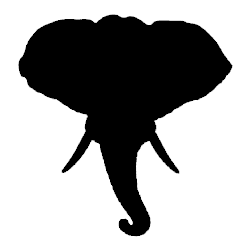REPUBLIC OF THE CONGO (CONGO)
Along with Gabon, Congo is home to the most important forest elephant populations and should considerably increase efforts to stop poaching and regional ivory trade flows.



Is there a need to revise the existing NIAP or develop a new one? ‘YES‘

BEST PRACTICE
In 2018, joint operations through the Lusaka Agreement Task Force (LATF) resulted in the arrest of eight African nationals in Congo and the Democratic Republic of Congo (DRC), including three Government officials. Five have already been sentenced to prison terms and significant fines for illegal trade in ivory and pangolins. They were linked to shipments of tusks seized in Thailand in September 2017. The success of the operation has been attributed in part to training for the investigators in advanced analytics technology at a new analytical centre (ACE) in Congo. Since 2014, the proportion of maximum sentences (five years in prison and/or 5,000,000 CFA francs) for ivory offences has increased significantly.
There has been some success in reducing the amount of trade in Congo’s local ivory market (which was recognised in the ETIS report to CoP17). Congo has adopted the Stop Ivory Management System for its stockpile. There has been an increase in inter-agency cooperation and the involvement of multi-sector actors/institutional structures.
Congo is in the process of developing national legislation to implement CITES: to strengthen the ability of enforcement agencies to conduct investigations and use controlled deliveries to better address wildlife crime. Congo has engaged successfully with NGOs: in reviewing its CITES legislation, training law enforcement officials and creating a database to track wildlife crime cases through arrest, conviction and sentencing, as well as subsequent enforcement efforts.
Congo has developed an action plan under the ICCWC Toolkit process but the recommendations have not yet been implemented (despite implementation being scheduled for April-September 2016 in its NIAP). The ICCWC Toolkit process provides a useful opportunity to conduct a comprehensive analysis of the strengths and weaknesses of preventive and criminal justice responses to curtailing wildlife and forest crime.
Congo’s NIAP is fairly comprehensive but its timelines need to be updated and it should be revised in line with the recommendations set out below.
KEY CONCERNS
Significant source of illegal ivory
Congo has experienced a significant decline in its elephant populations through poaching, including the loss of approximately 3,000 elephants (50 per cent of the population) in the Ndoki region. Congo, Cameroon and Gabon are the source of the most significant quantities of ivory going into trade from the Central African region. DNA analysis by the University of Washington demonstrated that the majority of ivory in large-scale seizures between 2006-14 was poached in only two areas. In the case of forest elephants, 86 to 93 per cent of seized ivory came from the TRIDOM region of Congo, northern Gabon and the adjacent Dzanga Sangha of SW Central African Republic. Because the number of poaching hotspots are so few and concentrated, a focus of law enforcement efforts on these key areas could result in significant reductions in elephant poaching, choking the biggest flow of contraband ivory entering the criminal networks that allow this transnational crime to operate.
Ivory processing in Congo
There is increasing concern that ivory carving/processing is taking place in Congo and elsewhere in West and Central Africa. Chinese-operated syndicates are turning to exporting worked ivory directly from Africa in small but frequent quantities, trying to minimise financial losses from seizures of large shipments of raw ivory. Processing is taking place in remote areas from where the finished products are transported to bigger cities such as Brazzaville and then exported abroad. Commercial consignments of worked ivory products exported from Congo have been seized in Asia with increasing frequency since 2012.
Lack of deterrent sentencing for wildlife crime
Congo’s legislation does not provide greater penalties for those higher up the illicit trade chain than for a poacher. Further, while there have been arrests for ivory trade-related offences, the penalties imposed are often weak and fail to serve as a deterrent.
Lack of reporting to facilitate CITES decision-making
The Congolese CITES Management Authority rarely reports elephant product seizure cases to ETIS. In recent years, most seizure cases for Congo have been reported by the NGO community engaged in collaborative law enforcement actions, including the Eagle Network and the WCS.
Lack of enforcement at borders
There is a lack of resources in detection operations at the border crossings. For example, the canine unit at Brazzaville airport was discontinued and needs to be reinstated.
Corruption
Corrupt public officials impede law enforcement. There is an anti-corruption framework but it has not been fully implemented. Complaints to the Anti-Corruption Observatory filed by several lawyers have so far remained unanswered.
RECOMMENDATIONS FOR NIAP REVISION / PRIORITY AREAS OF IMPLEMENTATION:
- Implement the recommendations resulting from the ICCWC Toolkit process
- Strengthen collaboration with China to address the role of Chinese nationals in Congo in processing and trafficking of ivory
- Conduct a focused national campaign through TV, radio and social media to raise awareness of poaching and the illegal ivory trade
- Submit regular reports to ETIS and CITES to support decision-making related to ivory trafficking
- Fully implement an effective ivory stockpile management system
- Amend legislation to provide for deterrent sentences for organised wildlife crime
- Establish a secure national database for wildlife crime cases to capture information on arrests to prosecution/enforcement
- Crack down on corruption by enforcing existing national anti-corruption legislation
- Strengthen regional enforcement collaboration to stop ivory trafficking, particularly with Angola, DRC and Gabon
- Increase capacity to detect wildlife trafficking at key border points
Key indicators of NIAP progress
